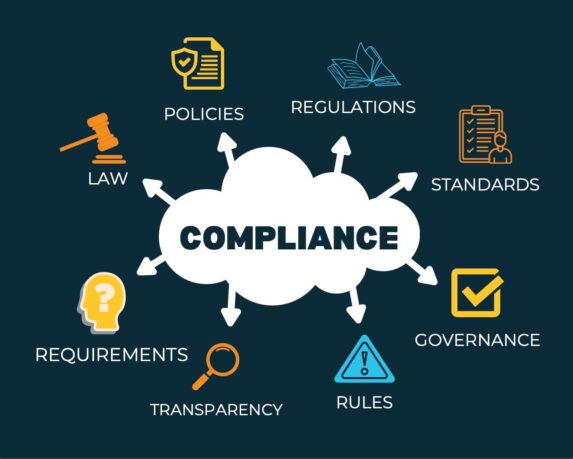Does your site network have the full tech stack?

Networks are brick and mortar businesses by definition, but their differentiation lies in their ability to incorporate and optimize technology in every step of the workflow. No single technology vendor will be able to service the full gamut of needs. Instead, leadership teams should select and configure optimal solutions for different stages of the value chain, and drive as much interoperability across the solutions as they can.
In fact, many of the elements of the tech stack could lead to best-in-class solutions that span industries. Some elements, however, are best served with purpose-built applications from vendors with deep industry roots.
The critical elements of the “tech stack:”
Business Development (BD):
Business development teams need a CRM system to manage the study pipeline and B2B selling opportunities. This requires a system to track sponsors and CROs as accounts, and studies as opportunities. When the studies convert, they enter the CTMS. Devana Solutions is an industry-specific pipeline management, study startup and intelligence solution built on Salesforce. As an alternative, networks can use their own Salesforce or similar CRM application, although any such solution would have to be adapted so that an opportunity (i.e., a study) can be associated with multiple sites, with each site having specific performance metrics that feed back to a central database for future feasibility purposes.
CTMS:
Historically, CTMS refers to scheduling, recruiting and financial management – the “back office”. The scheduling module should help sites manage study visit windows. The recruiting module lets sites manage patients before they become subjects in a study. And the finance module allows the sites to manage the specific complexity of clinical trial operations, tracking revenue recognition based on clinical events, ideally by tying revenue events to eSource data collection. Each of these modules has industry-specific context, so a purpose-built application may be best, although scheduling and recruiting are the most easily replicable in other applications. Finance, specifically revenue recognition, is the most industry-specific. It’s unlikely that a network could repurpose a general purpose accounting system to manage the complexities of holdbacks, screen failure formulas, and study budgets, among other things.
eClinical:
eSource, eISF and eConsent make up the trio of technologies used in the “exam room”. More recent solutions, these technologies standardize and streamline data collection on clinical trials. They are critical to enhancing data quality and enabling centralized oversight. What these technologies do is minimize re-work, free up valuable coordinator time (thus increasing throughput), and enabling centralization and even off-shoring of functions historically done at the local level. They are critical to taking site operations to the next level. These applications are by definition industry-specific, and have to conform to the FDA’s 21CFR11 requirements, so a network must use industry-specific solutions here.
Patient CRM:
While the recruitment function at CTMS is adequate for coordinators to manage patient communications, most CTMS systems are not built to support sophisticated central marketing campaigns. Instead, networks should supplement local recruiting efforts with a centralized CRM system for online recruiting. The CRM system should manage campaigns, track lead sources, automate lead activities including all outbound communication efforts across channels (calls, texts and emails), incorporate customized pre-screening qualification activity, and present robust views of the marketing funnel. A network could configure an enterprise CRM solution for this purpose.
Virtual Contact Center:
Centralized recruiting teams require call centers to perform phone screenings for patient qualification and placement. Call centers need technology to optimize and streamline VOIP communications (e.g., autodialing, routing) for maximum efficiency. Many virtual contact center solutions can integrate seamlessly into the CRM system used, so that the calling cadence can follow pre-programmed campaign rules.
Finances:
While the financial function for CTMS helps manage revenue recognition for the clinical trials, they generally cannot manage the P&L, balance sheet or other components of a financial system. Large organizations need workflows and controls to manage all aspects of their financial operations. So ideally, sites use CTMS for study revenue recognition which can then feed the underlying financial platform used.
Analytics:
While each of the above systems will have their own reporting tools, enterprises need business intelligence to manage operations and gain insights to drive continuous improvement. Ideally, each of the components in the tech stack can feed a single data lake, with a business intelligence tool that can integrate and visualize data across the solutions. For instance, a BI tool could integrate the upstream marketing funnel from the patient CRM with downstream randomization from eSource to create an end-to-end funnel.
The tech stack team
To manage this technology, a network will need to hire a CTO with a small staff, and make that person a core member of the executive team. This team’s mandate is to identify, configure and implement the appropriate technology solutions, and ensure that the solutions operate with maximum interoperability to reduce redundant workflows or data discrepancies. The goal of the tech stack is to support the business objectives of the network, and allow the enterprise to scale. The team will not necessarily need programming skills, but will have to understand modern technology frameworks.
At CRIO, we recognize that we’re a critical piece of the puzzle, but not the only piece. We’ve built a best-in-class enterprise grade eSource solution with fully integrated eConsent, CTMS, eRegulatory and other solutions, but we’re also committed to interoperability so that we can work with, and not against, the needs of the enterprise.




